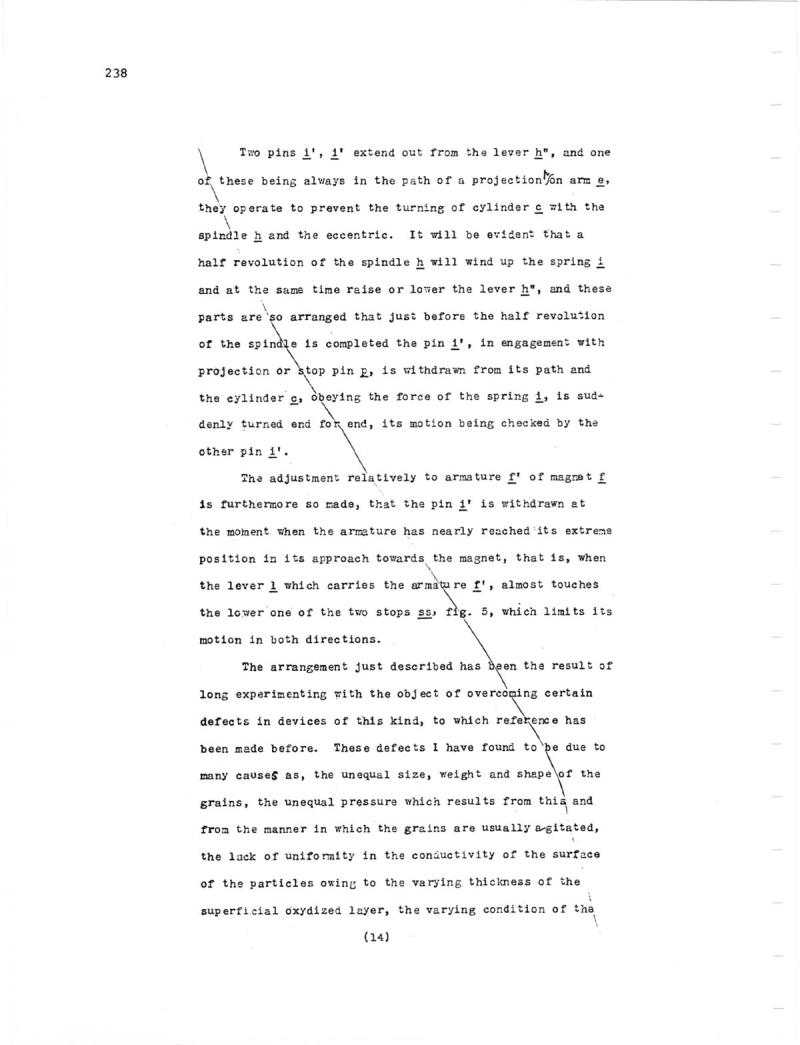
Nikola Tesla Patents
238 Two pins i', i' extend out from the lever h", and one of these being always in the path of a projection on arm e, they operate to prevent the turning of cylinder c with the spindle h and the eccentric. It will be evident that a half revolution of the spindle h will wind up the spring i and at the same time raise or lower the lever h", and these parts are so arranged that just before the half revolution of the spindle is completed the pin i', in engagement with projection or stop pin , is withdrawn from its path and the cylinderc, obeying the force of the spring i, is suddenly turned end for end, its motion being checked by the other pin 1¹. The adjustment relatively to armature f' of magnet f is furthermore so made, that the pin i' is withdrawn at the moment when the armature has nearly reached its extreme position in its approach towards the magnet, that is, when the lever 1 which carries the armature f', almost touches the lower one of the two stops ss, fig. 5, which limits its motion in both directions. The arrangement just described has been the result of long experimenting with the object of overcoming certain defects in devices of this kind, to which reference has been made before. These defects I have found to be due to many causes as, the un equal size, weight and shape of the grains, the unequal pressure which results from this and from the manner in which the grains are usually agitated, the lack of uniformity in the conductivity of the surface. of the particles owing to the varying thickness of the 1 superficial oxydized layer, the varying condition of the (14)
